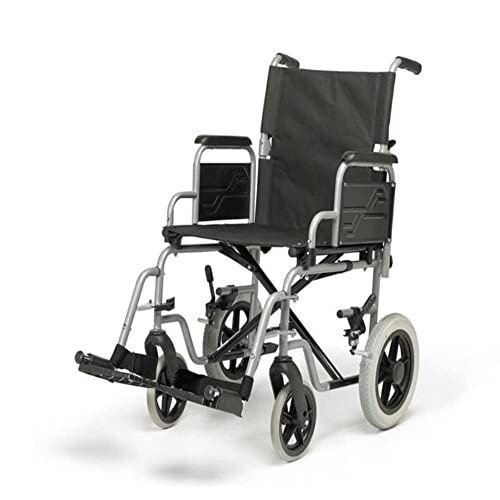The Most Hilarious Complaints We've Seen About Mobility Scooters

Navigating the World of Mobility Scooters: A Comprehensive Guide
In an era where mobility is significantly acknowledged as an essential aspect of lifestyle, the need for assistive gadgets has actually surged. Among these, mobility scooters stand out as a flexible and empowering option for individuals with mobility challenges. about his looks into the world of mobility scooters, using insights into their types, benefits, acquiring factors to consider, and maintenance pointers.
Comprehending Mobility Scooters
Mobility scooters are motorized automobiles developed to help people with mobility issues in moving more easily and independently. mobility scooters for sale are particularly beneficial for those who find strolling hard due to conditions such as arthritis, numerous sclerosis, or post-surgical healing. Unlike manual wheelchairs, mobility scooters need minimal physical effort, making them an exceptional choice for extended use.
Kinds Of Mobility Scooters
Three-Wheel Scooters
- Pros: More maneuverable, lighter, and easier to store.
- Cons: Less stable on rough surface.
- Best For: Indoor and smooth outdoor surface areas.
Four-Wheel Scooters
- Pros: More stable, much better on rough terrain, and can carry much heavier loads.
- Cons: Bulkier and less maneuverable.
- Best For: Outdoor use, especially in parks and on unequal surfaces.
Portable Scooters
- Pros: Lightweight, collapsible, and simple to transport.
- Cons: Limited range and speed.
- Best For: Travel and occasional usage.
Durable Scooters
- Pros: Built to handle much heavier users and rugged environments.
- Cons: More pricey and less portable.
- Best For: Users over 300 pounds or those who need to browse rough surface.
Standing Scooters
- Pros: Provide a standing position, which can be helpful for users who can not sit for long durations.
- Cons: Limited stability and variety.
- Best For: Users who choose standing and need short-distance assistance.
Advantages of Mobility Scooters
Boosted Independence
- Mobility scooters enable users to take a trip longer distances without fatigue, allowing them to get involved more completely in day-to-day activities and social events.
Improved Safety
- With features like seat belts, anti-tip wheels, and brake systems, mobility scooters use a more secure option to manual wheelchairs and strolling aids.
Convenience and Support
- Adjustable seats, back-rests, and armrests guarantee a comfy trip, reducing the pressure on the user's body.
Cost-efficient
- While the initial financial investment can be considerable, mobility scooters are frequently more affordable in the long run compared to frequent taxi rides or specialized transportation services.
Social Inclusion
- Mobility scooters facilitate greater social interaction by making it possible for users to participate in community activities and keep a more active way of life.
Elements to Consider When Buying a Mobility Scooter
User Needs and Abilities
- Examine the user's physical condition, mobility requirements, and daily activities to identify the most appropriate type of scooter.
Size and Weight Capacity
- Make sure the scooter can accommodate the user's size and weight comfortably and securely.
Variety and Speed
- Consider the typical range and speed required for daily usage. Some scooters have a variety of up to 30 miles on a single charge.
Mobility
- If travel is a top priority, select a portable scooter that can be easily dismantled and transported.
Maintenance and Support
- Select a trustworthy manufacturer that offers dependable consumer service and upkeep support.
Budget
- Set a budget plan and explore options that provide the very best value for cash. Think about funding choices and prospective insurance protection.
Maintenance Tips for Mobility Scooters
Routine Cleaning
- Tidy the scooter routinely to avoid dirt and particles from affecting its performance. Utilize a soft fabric and moderate detergent.
Battery Maintenance
- Follow the maker's guidelines for battery charging and upkeep. Frequently examine the battery level and prevent deep discharges.
Tire Inspection
- Inspect the tires for wear and proper inflation. Replace or fix as needed to make sure a smooth and safe trip.
Lubrication
- Oil moving parts such as the chain and equipments to lower friction and prevent wear.
Professional Servicing
- Schedule regular professional maintenance to resolve any concerns and make sure the scooter remains in ideal condition.
FAQs About Mobility Scooters
Are mobility scooters covered by insurance?
- Some insurance coverage plans, including Medicare, might cover the cost of mobility scooters under particular conditions. Inspect with your company for specific information.
Can I use a mobility scooter inside your home?
- Yes, lots of mobility scooters are designed for both indoor and outside usage. mobility scooters for sale appropriates for the type of surfaces you will be navigating.
How fast can mobility scooters go?
- The speed varies by design, but many mobility scooters have an optimal speed of 4 to 8 miles per hour.
Do I require a license to run a mobility scooter?
- In most countries, a license is not needed to run a mobility scooter. However, it is necessary to follow regional guidelines and traffic laws.
Can I take a trip with a mobility scooter?
- Lots of mobility scooters are developed to be portable and can be disassembled for travel. Contact airline companies and transport service providers for particular requirements.
Mobility scooters are a transformative tool for individuals with mobility challenges, using a blend of self-reliance, safety, and comfort. By understanding the different types of scooters, thinking about crucial getting factors, and following upkeep best practices, users can take advantage of their mobility scooter and lead a more active and satisfying life. Whether for day-to-day commutes or leisurely outings, a well-chosen mobility scooter can be a valuable buddy on the journey to boosted mobility and quality of life.

